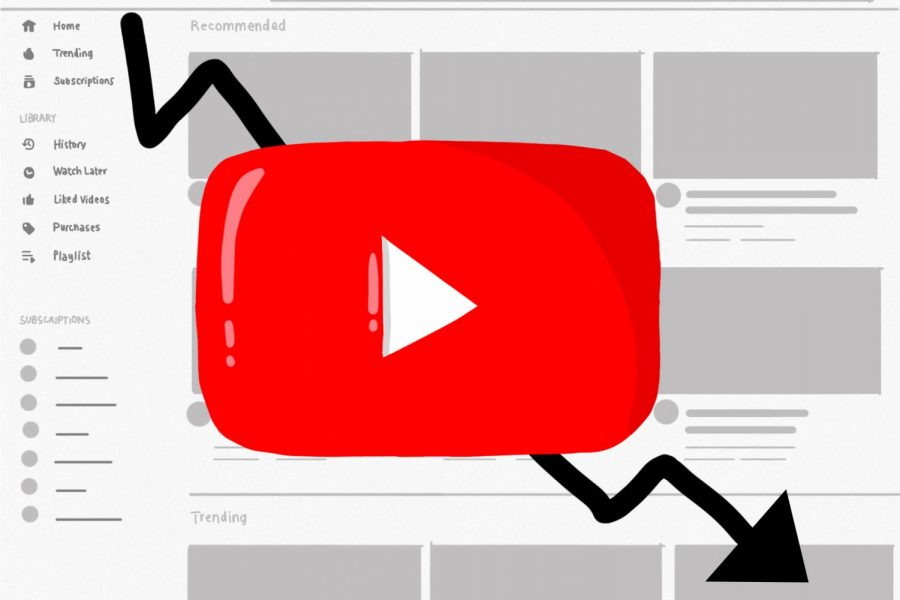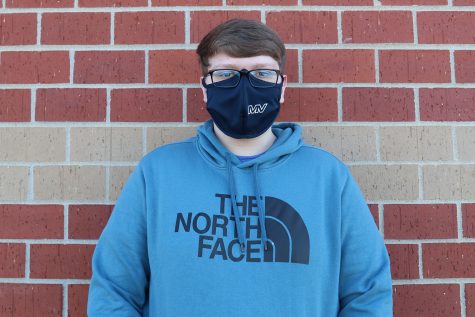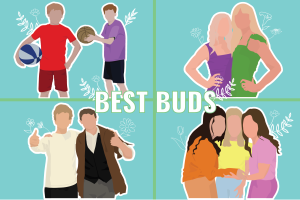YouTube’s biggest downfall is itself
Continuous baffling decisions that hurt its users signify the inevitable downfall of the company
Due to Youtube’s inability to resolve problems impacting Youtube Creators and the general public, JagWire reporter/photographer Evan Sherman predicts an inevitable downfall of the company.
February 27, 2020
Ever since video sites started to take off, YouTube has been making more and more money at the expense of its content Creators and users (YouTube makes around $7.60 every one thousand views while Creators make about $4.16), while Creators suffer the consequences of a broken system that allows the platform to exercise its immense power at will. The best Creators are forced to produce constant content for an audience if they wish to make money, which would not be a problem if the company would run a platform that allows Creators to have a fair chance against the lucky few who managed to make it big. While YouTube claims to have tried to solve the problem, anything it has done has led to meaningless data at best and at its worst has made problems infinitely worse than they were to begin with.
Contrary to popular myth, it’s not easy to make content for YouTube as a full time job. There are many aspects to creating content — sound design, animation, handling equipment and entertainment, just to name a few — and many Creators do every aspect of production completely alone. Not only this, but with the sheer number of YouTubers uploading to the platform, an interesting personality and pure luck is what makes a select few stand out above the rest.
All this would already be enough to make being a content Creator on YouTube as difficult as a regular full time job, but YouTubers are at the mercy of a platform that not only abuses its power in baffling decisions but also constantly changes the rules to attempt to keep the ball in its court.
Between the few videos that make it big, there are millions of videos that took hours or even days of work only to end up losing ad revenue due to an automated system that detected something “inappropriate” (their guidelines on this seem to change by the month), or getting the video taken down due to a copyright claim that only won because the company filing the strike is inevitably bigger than a single Creator. As if that wasn’t bad enough, even if a video is lucky enough to make it past all that, due to recent algorithm “improvements,” sometimes videos won’t even end up in the recommended feed of subscribers, meaning channels are left to die as their viewer count drops and their revenue slows. You can find more statistics at Digital Media News.
All the Creators can do is complain to their audience and file for these stricken videos to get reviewed by a real person to start making money off them again. This is highly impractical; there are millions of videos like this, and it would be nearly impossible to manually review them all. And no matter how much Creators complain, all YouTube seems to do is take a stance of ignoring the problem and hope it goes away or offer a “solution” that just makes everything worse or creates an even bigger problem.
YouTube is more than aware of the issue — as more and more of the platform complains about it, the more and more unhelpful statements and solutions arise. All in all, it appears the company seems to think that it’s not a problem at all.
YouTube, as a platform, employer and company, consistently does nothing to house environments for small Creators to build a community, which is what the company claims to do and used to stand for. They need to stop putting on the facade that they care about community and its users when in the past five or more years they have cared about nothing more than money and consumption.
The financial struggle of getting off their feet, emotional struggle of staying there and lack of certainty, longevity and benefits means Creators are or will be forced into a position that would either make them leave the platform and abandon communities or stick with a platform that takes hours out of every day that are not worth the miniscule financial gain.
Given that most of its biggest Creators continue to lose interest, lose fans or even just leave behind a successful career altogether, it’s clear that YouTube is aware of the problem and just doesn’t care.
All of these issues might seem bad, but in YouTube fashion, they managed to do something much worse. In addition to hosting a platform that is dying despite the amount of life on it, a recent issue emerged that resulted in a government agency stepping in to resolve the issue and make virtually every Creator fear for their jobs.
Recently, thousands of gruesome, gory or sexual videos were posted, disguised as child-friendly cartoons, in order to blend in to child friendly playlists that are automatically generated by YouTube recommendations. These videos went under the radar for days, possibly weeks, and were seen by thousands of children around the world. Instead of coming up with a solution to the issue when they found out about it, YouTube didn’t offer any solution or even offer a statement toward the problem, which is believed to be due to the fact that they make money off of the videos. Additional information can be found at The Verge and Ars Technica.
Since they allowed the issue to pursue for so long, the Federal Trade Commision (FTC) stepped in and stated that all content Creators would be forced to follow the guidelines of the Child’s Online Privacy Protection Act (COPPA) with videos marked as “for kids.” This means all videos marked “for kids” could potentially get taken down, flagged or lose all revenue simply for being marked “for kids.”
This in itself isn’t an issue; it just means that Creators who wanted to make a living off of videos wouldn’t mark videos as targeted for kids and would just not make money off of YouTube Kids, which is an entirely different platform. The issue is that the FTC gets to decide which videos are for kids, in addition to ones that are obviously marked that way. The rulings they have released are absolutely terrifying; anything from having bright colors anywhere in the video to having small talk about something as simple as a pet will be “for kids” according to the FTC, meaning the video is almost guaranteed to lose revenue or be taken down entirely. Anything from art and vlogs to movies and video games could fall victim to this system. That’s not even the worst part. The worst part is that, as usual, content Creators have no idea when these rules will be enforced, if they will continue to make money, if their videos will stay up or what YouTube plans to do, if anything.
This might just seem like a bunch of problems that are near impossible to fix, but in reality all the issues with YouTube could be resolved with simple changes.
First, in regards to the situation with the FTC, YouTube should add a mixed audience option under videos, meaning it’s for adults and kids, and just allow COPPA to take effect under YouTube Kids. This obvious solution was offered to YouTube by the FTC, but they quickly refused for no apparent reason.
Regarding the issue with disgusting people creating fake gory kids videos, all they have to do is let their old system detect the videos and take them down. Then they need to update their recommended feature so that these videos are not automatically played or added to playlists for children. Updating this feature in the right way could ensure that fans are getting the videos of the content Creators they like, eliminating the issue of videos not getting to fans and Creators experiencing burnout due to the system.
In addition, channels involved in the YouTube partnership program should receive the minimum benefits that those in other career paths receive, including insurance and retirement plans, as well as clarity to the longevity of their channel on the part of YouTube.
These three simple fixes could be implemented in months, and resolve all the issues that have been plaguing content Creators for years, pushing decades.
Ultimately, YouTube’s nonchalant approach to almost every problem inevitably ensures the downfall of the platform. All they have to do to fix it is start to care.












Chris • Aug 27, 2020 at 3:23 am
It’s Google in general. Google and YouTube were essentially perfect about one year ago. Maybe a little over a year ago. Whatever happened management wise with in Google is the reason why everything has gone downhill both in terms of Google search results in the Google search engine and why YouTube has been all over the place in terms of changes in features. Didn’t the two founders of Google resign recently? This is the problem when you mix bad ideology and ideas with large companies. You wind up having a few people decide for Millions if not billions of users. Did you know that Google’s Mantra used-to-be “do no evil”. Do you know that they remove that from the website? Let’s hope that board members kick out whoever is causing all these problems and we can get back to the service that we know and love